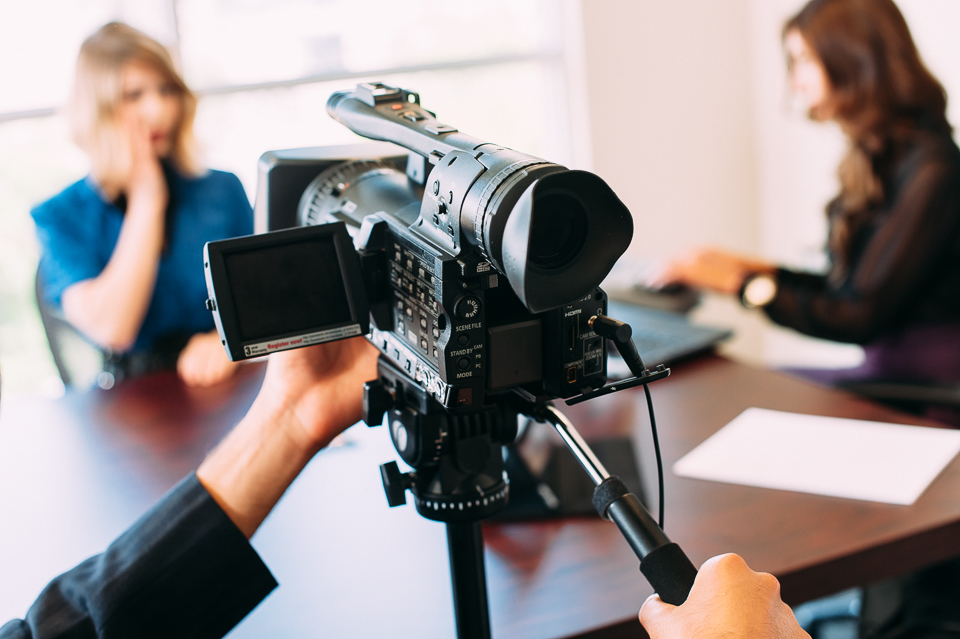How Legal Videography Improves Courtroom Discussions and Evidence
How Legal Videography Improves Courtroom Discussions and Evidence
Blog Article
Looking Into the Mechanisms of Lawful Videography: Introduction Its Procedure in Shielding Genuine Visual Statement for Judicial Procedures
In the world of judicial proceedings, the function of legal videography stands as a foundation in preserving and offering aesthetic evidence. As modern technology proceeds to breakthrough, the devices behind lawful videography have actually ended up being increasingly elaborate, using a vital layer of credibility to statements caught on video clip.
Historic Advancement of Lawful Videography
Analyzing the historic progression of lawful videography exposes a substantial transformation in the capturing and discussion of aesthetic proof within the legal landscape. In the past, legal proceedings greatly relied upon created transcripts and pictures to document events and supply proof. With the development of video clip modern technology, the lawful industry witnessed a paradigm shift in how visual testimony was caught and offered.
The advancement of lawful videography can be mapped back to the late 20th century when innovations in video recording equipment made it much more easily accessible for usage in court rooms. This technical innovation not just boosted the accuracy and reliability of visual evidence but also transformed the way cases existed to discretionary (Legal Videography). Lawyers began to acknowledge the persuasive power of video recordings in conveying feelings, subtleties, and non-verbal hints that composed transcripts or photographs alone might not catch efficiently

Modern Technology Advancements in Video Clip Paperwork
What vital technological advancements have changed video documents in the legal area? The legal area has seen substantial developments in video clip paperwork modern technology that have boosted the authenticity and integrity of visual proof in judicial proceedings.
Additionally, improvements in video clip encryption and watermarking technologies have actually strengthened the safety and tamper-proof nature of video evidence, guarding it against unapproved modifications or meddling. The arrival of cloud storage solutions and remote gain access to abilities has structured the storage space, access, and sharing of video clip evidence, facilitating seamless partnership among legal experts and making certain reliable accessibility to critical visual testimonies when needed. These technological developments in video documents have actually undoubtedly revolutionized the legal area, enhancing the accuracy, trustworthiness, and admissibility of visual evidence in judicial proceedings.
Role of Legal Videographers in Courtroom Settings
The development of video documentation technology in the lawful field has demanded a vital function for legal videographers in court setups, ensuring the stability and integrity of visual testaments provided during judicial process. Lawful videographers play a fundamental duty in catching and preserving exact visual proof that can be essential in litigation. Their responsibility reaches establishing up equipment, taping procedures, and creating high-grade video clips that accurately mirror the events in the courtroom.
In court setups, lawful videographers should adhere to stringent guidelines and standards to maintain the credibility of the aesthetic document. They have to have an eager eye for information and a complete understanding of lawful treatments to guarantee that the video footage they catch is a true representation of the occasions that took place. In addition, lawful videographers often function carefully with legal teams to ensure that the video clip evidence lines up with the situation's needs and can be this effectively offered in court to support the legal arguments being made. In general, the function of lawful videographers in courtroom settings is indispensable in maintaining the concepts of justice and making certain the transparency of lawful procedures.

Ensuring Admissibility and Honesty of Video Evidence
To preserve the credibility of visual evidence provided in lawful process, guaranteeing the admissibility and honesty of video clip evidence is a vital duty for legal videographers. Admissibility refers to the acceptance of proof by the court, and for video clip evidence to be admissible, it needs to fulfill certain criteria. Legal videographers play a vital duty in ensuring that the video clips they capture abide by the rules of evidence, such as dependability, authenticity, and significance.
Stability of video clip proof includes maintaining the originality and accuracy of the footage from the time it is recorded until it is presented in court. This includes securely saving the video clip documents, recording the chain of custody, and avoiding any tampering or changes. Lawful videographers need to abide by stringent procedures to guarantee the integrity of the video clip proof and stop any type of challenges to its credibility.
Future Trends in Legal Videography
Offered the boosting reliance on technology in legal process, legal videographers are poised to welcome ingenious developments shaping the future of aesthetic statement capture and presentation. Among the famous trends coming up is the assimilation of online reality (VIRTUAL REALITY) and enhanced fact (AR) modern technologies into lawful videography. These innovations have the potential to change exactly how aesthetic evidence exists in courts, enabling discretionary to immerse themselves in the scene of the crime or case.
Moreover, making use of expert system (AI) algorithms for video evaluation is expected to simplify the process of assessing and evaluating huge amounts of video clip footage. AI can assist in determining key moments, abnormalities, and patterns within videos, boosting the efficiency of legal examinations.

Verdict
Finally, lawful videography has actually played a critical function in providing genuine visual proof for judicial process. click here for more With technical developments and the proficiency of lawful videographers, the integrity and admissibility of video clip proof are guaranteed in court room settings. As legal videography remains to evolve, it will be important to copyright standards that keep the accuracy and dependability of aesthetic testimony for the future of legal procedures.
Examining the historical development of lawful videography reveals a considerable makeover in the capturing and presentation of visual proof within the lawful landscape.The evolution of video paperwork modern technology in the lawful area has actually necessitated an important duty for lawful videographers in court room settings, guaranteeing the stability and integrity of aesthetic testaments offered during judicial proceedings. Additionally, legal videographers commonly function carefully with lawful groups to make certain that the video clip proof straightens with the instance's needs and can be effectively presented in court to support the lawful arguments being made.To maintain the reliability of visual evidence presented in legal proceedings, ensuring the admissibility and honesty of video clip proof is an essential duty for lawful videographers. As legal videography continues to evolve, it will be important to copyright standards that maintain the precision and integrity of visual testimony for the future of legal process.
Report this page